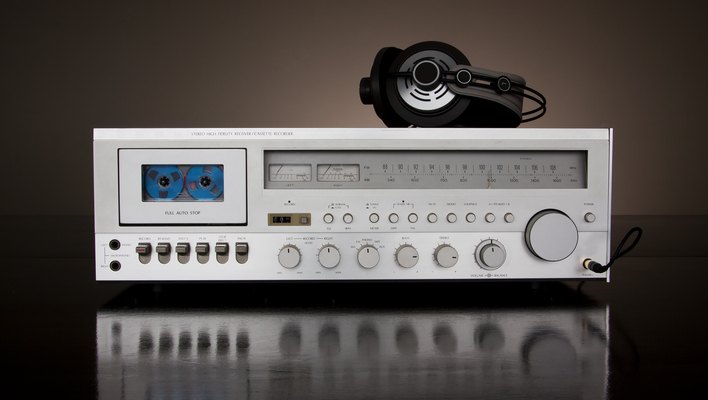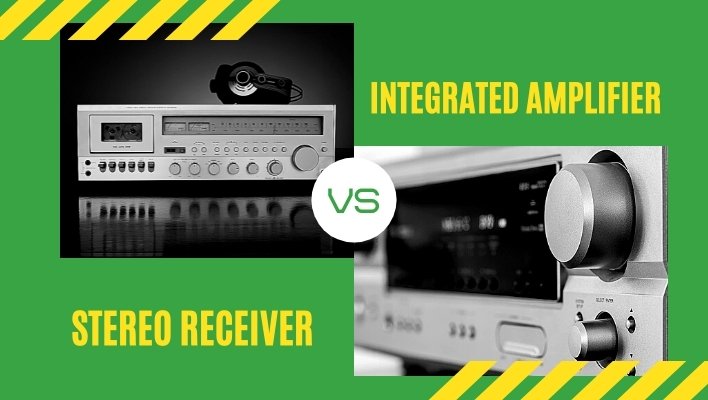Do you want to set up your music system and are wondering what the best choice between stereo receiver vs. integrated amplifier is? Home entertainment systems are serviced by either receivers or amplifiers.
Though these two devices may look the same, there are several differences between them. What determines whether to choose an integrated amp or stereo receiver is your home entertainment needs.
Here is what you need to know about these two and how to choose the best for your music system.
What is a Stereo Receiver?

Receivers were introduced to the market in the 1960s to offer consumers a way to save space and access the radio directly. Receivers have undergone several modifications and dominated the US market for a very long time.
If you are looking for a receiver, you will probably have to choose between A/V receivers vs. stereo receivers. Your choice will depend on your system’s needs. A/V receivers can support both video and audio, and this makes them different from stereo receivers.
A/V receivers have multiple inputs, which you can use to connect gaming consoles, TV, speakers, and other media streaming devices. They are ideal for anyone who is looking for an easy way of consolidating all components of their home theater system easily.
On the other hand, if you want to set up your home theater conveniently, a stereo receiver may be the best choice for you. A stereo receiver is an amplifier with a built-in radio section. In addition, it includes extra features such as volume controls, AM/FM tuner, input selection, radio, preamp, and more.
Though stereo receivers have an amplifier to drive the subwoofers or speakers, they can also provide outputs from the preamplifier to enable connection to an external amp. You should note that all receivers are amplifiers, but amplifiers are not receivers.
You can use a stereo receiver in your home theater system to improve the quality of sound to your audio sources. However, if you have multiple video sources, you may have to wire the video-only signals directly into the TV.
Pros of Stereo Receivers
There are several types of receivers to choose from. These receivers are more convenient than amplifiers and have more functions. Some of the advantages of stereo receivers include:
- They are more affordable: You will not have to buy a separate amp to power up your subs or speakers because stereo receivers include a built-in amplifier. This means that you will save more.
- All-in-one Unit: A stereo receiver has everything you need to set up your home theater system in one neat package, including added functionalities like the preamp.
- It saves space
Cons of Stereo Receivers
- They cannot be upgraded: Unlike other devices that allow you to upgrade individual parts, you cannot upgrade any part in a stereo receiver. Instead, if any part of the unit is not working, you will have to replace the entire unit.
- Low-quality amp: Though stereo receivers have built-in amplifiers, most of the amps are low quality and may not drive powerful subs. If you have large subs or speakers, you may have to get an equally powerful amp to make them work.
- They are purely for audio.
Integrated Amplifiers

Amplifiers are devices that convert low voltage signals from the stereo into powerful signals with enough gain to power up the speakers or subwoofers. If you value high-quality or loud music, an amplifier is a valuable addition to your music system.
An amp’s functions can be split into two sections: the first section, also known as the preamplifier, will allow you to use several inputs and also select the level of gain your subs require.
The preamp allows you to switch between wireless and wired sources and also control the volume. Preamps can also include tone and balance controls.
The second section, also known as the power amplifier, does the main job. It generates the wattage you need to drive the subs and speakers. When both sections of the amp are placed in one chassis, the end result is an integrated amplifier.
Every music system, regardless of its size, should include an amp to ensure quality music. Several music lovers across the globe include integrated amps in their music setup to get the best sound from their systems.
Though you need more than an amplifier to get your music system to work, without it, your stereo will not produce enough gain or power to make your subs or speakers work.
Some integrated amps can feature analog or digital audio inputs, wireless connectivity such as Apple AirPlay 2, Bluetooth, built-in Wi-Fi, and outputs that make them convenient and compatible with various devices and components.
Pros of Integrated Amplifiers
Here are some advantages of adding an amp to your music system:
- First, you can easily upgrade the amp separately: if you need a more powerful amp or doing some repair, you will not have to buy a whole new unit. You can only replace the broken component without compromising the integrity of the device.
- You will have more control over what to include in the system
- They are convenient
Cons of Integrated Amplifier
- They take up extra space
- They are more costly
Integrated Amplifier VS Stereo Receiver: What is the Right Choice?
So, which choice should you make between integrated amp vs. receiver? Both high-quality amps and receivers can improve the quality of sound from your system. However, when deciding between the two, you should consider the type of music system you have, the number of subs or speakers, the size of the room, and your listening habits.
For example, if you are setting up the system in a small room, you watch movies or listen to music occasionally, or you do not need huge speakers, a stereo receiver can be the ideal choice for you.
You can also choose a speaker if you just want to set up your home theater system and connect the game consoles, speakers, and TV in one spot.
On the other hand, if you listen to the radio or watch many movies, enjoy loud music, are setting up the system in a large room, and have powerful subwoofers, you will need a device that can power up the subs and give you good bass. In this case, you will need an integrated amplifier.
Although it may seem like a no-brainer when choosing between stereo receiver vs. integrated amplifier, you will need more than an amplifier to make your music system work well. It would be best if you also considered other factors such as the quality and size of the speakers and the quality of your stereo. Note that integrated amps are ideal for more complex setups.
Wrapping Up
When choosing between integrated amplifier vs. receiver, it means choosing between buying a device that all its components, namely the tuner, preamp, and amp, are contained in one device or are separated. The best device for you will depend on your music system setup and your entertainment needs. Remember, to get the best from your system, you should buy high-quality devices.

